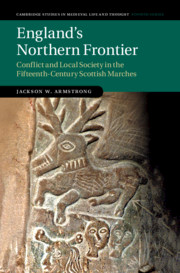3 - Earth and Stone
from Part I
Published online by Cambridge University Press: 30 October 2020
Summary
If the preceding chapter set out a conceptual apparatus with which to understand the northern marches, then this chapter examines two topics which have been salient in historical interpretations of the region. The first relates to the view of the far north as an ‘embattled frontier society’, defended by strings of garrisoned fortresses. It is this particular emblem of the supposed exceptional militarisation of the region, its towers and castles, which shall be investigated. The second topic concerns the landscape of the ‘northe parties’ and its corresponding patterns of human activity and settlement. In both popular and academic accounts, the far north is often a wild country, remote, mountainous, dominated by difficult hill farming and rugged hill tribes. Such interpretations are shaped in part by modern assumptions about human geography; they are also partly informed by the rhetorical efforts of medieval borderers themselves. Marchers crafted petitions and turns of phrase in their dealings with the hierarchy of the king’s government and with that of the church which (as should be no occasion for surprise) emphasised aspects of border life which played to their advantage and benefit. If what follows tends to offer an appraisal of existing work in a range of specialisms (including especially architectural and landscape history) more than a digestion of raw historical evidence, it does so seeking to engage the current historiography of the Anglo-Scottish marches with a view to provoking some critical debate and to opening up to scrutiny some of the prevailing assumptions about the exceptional character of this area. The argument to be advanced here is that the towers and castles of the marches should not be understood solely, or even primarily, as a symptom of war and a pressing need for security. The point will also be pursued that the landscapes of the medieval far north cannot be reduced in any satisfactory way to a single category of ‘upland’ terrain, and so the diversity of farming practices and corresponding patterns of human habitation in the region require more nuanced appreciation if they are to be understood meaningfully.
- Type
- Chapter
- Information
- England's Northern FrontierConflict and Local Society in the Fifteenth-Century Scottish Marches, pp. 74 - 106Publisher: Cambridge University PressPrint publication year: 2020

